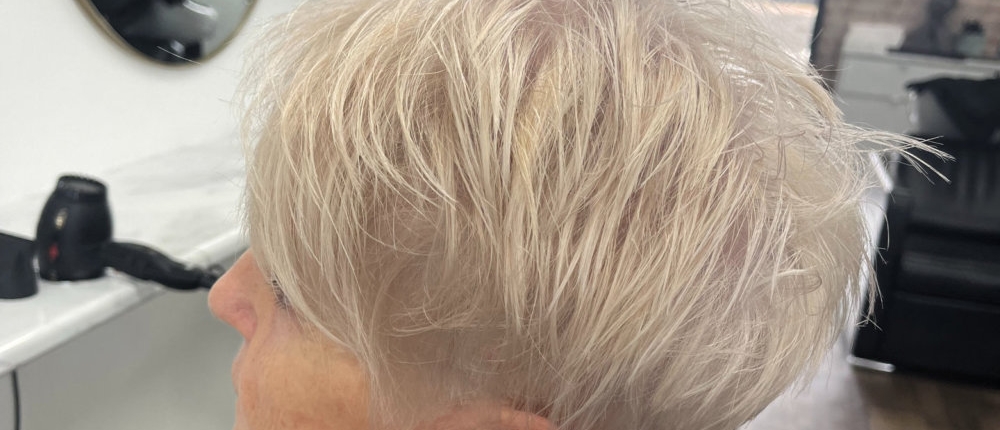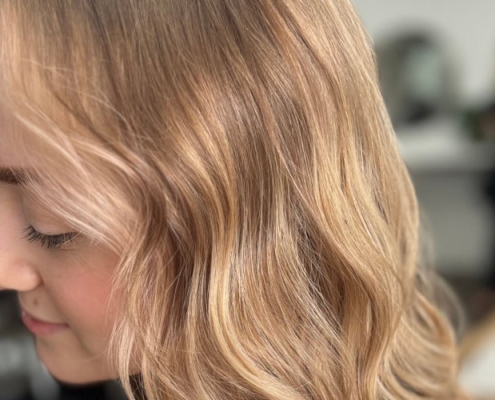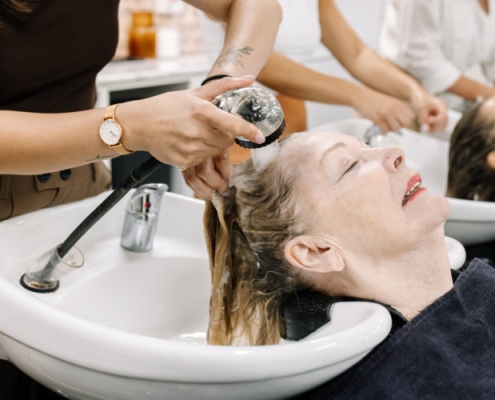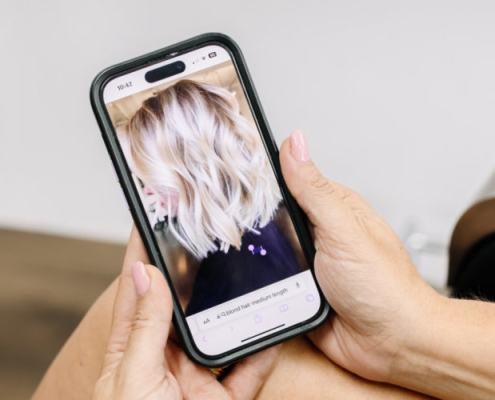Why Is My Hair Thinning? Common Causes and Solutions
While hair thinning can be frustrating, there are multiple strategies to help improve hair health, create the appearance of fuller hair, and, in some cases, promote regrowth. By combining the right hairstyle, diet, scalp treatments, and professional advice, you can take control of your hair health and feel more confident in the process.
1. Choosing the Right Hairstyle
Hair thinning doesn’t mean you have to sacrifice style. The right haircut and styling techniques can create the illusion of thicker, fuller hair while complementing your facial features.
Best Haircuts for Thinning Hair
- Layered Cuts: Adding layers creates movement and volume, giving the impression of thicker hair. Light, wispy layers can frame the face and add body without making hair appear too thin at the ends.
- Blunt Bobs: A blunt cut makes the hair appear denser by keeping the ends even and uniform. Bobs that sit around chin-length are particularly effective for fine, thinning hair.
- Pixie Cuts: Short styles like pixie cuts remove the weight of long, thinning hair and make styling easier. These cuts add a youthful, modern look while increasing volume at the crown.
- Shoulder-Length Lobs: Long bobs (lobs) add structure and prevent hair from looking limp. A slight wave or texture can further enhance fullness.
- Side-Swept Fringe: Side fringe create volume at the front and make hair look thicker around the face.
Styling Tips for Thinner Hair
- Avoid middle parts: A deep side part can instantly add volume at the roots and cover thinning areas.
- Use volumising mousse: Lightweight mousse applied at the roots can lift hair and prevent it from looking flat.
- Blow-dry upside down: Drying hair upside down helps boost root volume.
- Tease hair strategically: Gently backcombing the crown area adds height and thickness.
- Opt for soft curls or waves: Using a curling iron on low heat can create volume and bounce without damaging fragile strands.
For a full list of the best hairstyles for thinning hair, check out our guide: Best Hairstyles for Thinning Hair to Add Volume.
2. Adopting a Hair-Friendly Diet
Healthy hair starts from within. A nutrient-rich diet plays a crucial role in hair growth and strength. Deficiencies in certain vitamins and minerals can contribute to hair thinning and increased shedding.
Key Nutrients for Hair Growth
- Iron: Low iron levels can lead to hair thinning, especially in women. Foods rich in iron include spinach, lentils, red meat, and quinoa.
- Protein: Hair is made of keratin, a protein. Ensuring adequate protein intake with eggs, chicken, fish, and legumes strengthens hair strands.
- Omega-3 Fatty Acids: These healthy fats nourish hair follicles and promote growth. Found in salmon, walnuts, chia seeds, and flaxseeds.
- Biotin (Vitamin B7): Essential for keratin production, biotin helps strengthen hair and prevent breakage. Good sources include eggs, almonds, and sweet potatoes.
- Zinc: A deficiency in zinc can cause excessive hair shedding. Zinc-rich foods include pumpkin seeds, chickpeas, and shellfish.
- Vitamin D: Low vitamin D levels have been linked to hair loss. Sun exposure, fatty fish, and fortified dairy products help maintain adequate levels.
For a deeper dive into which foods support hair health, read: Thinning Hair and Diet: Nutrients You Need for Stronger Strands.
3. Scalp Treatments and Hair Growth Products
The health of your scalp directly affects the health of your hair. A clean, well-nourished scalp creates the optimal environment for hair growth.
Scalp Care Tips
- Use a gentle, sulphate-free shampoo: Harsh shampoos can strip natural oils and weaken hair.
- Massage your scalp daily: Scalp massages improve blood circulation, stimulating hair growth.
- Exfoliate once a week: A scalp scrub removes product buildup, allowing hair follicles to function properly.
Recommended Hair Growth Treatments
- Minoxidil (Rogaine): A topical solution that promotes regrowth by increasing follicle activity.
- Essential Oils: Peppermint and rosemary oil may help improve scalp circulation.
- Collagen Supplements: Support hair thickness and strength.
- Keratin Treatments: Strengthen hair and prevent breakage.
4. Seeking Professional Advice
If hair thinning persists despite lifestyle changes, seeking help from a professional can be beneficial.
When to See a Specialist
- Excessive shedding that lasts more than six months.
- Noticeable bald spots or receding hairlines.
- Itchy, irritated, or inflamed scalp.
Trichologists and dermatologists can perform scalp analysis, blood tests, and personalised treatment plans to help address the root cause of hair thinning.
Learn more about when it’s time to seek expert advice: Is It Time to See a Specialist for Your Thinning Hair?.
5. Boosting Confidence While Managing Thinning Hair
Hair thinning can be emotionally challenging, but there are ways to feel more confident while managing it.
Self-Care and Styling Tips
- Use volumising hair products to add lift and texture.
- Choose flattering hairstyles that enhance fullness.
- Consider a new hair colour—lighter shades can make hair appear denser.
- Experiment with clip-in hairpieces or toppers for added volume.
For more confidence-boosting strategies, read: How to Boost Confidence When Dealing with Thinning Hair.
Final Thoughts
While thinning hair can feel overwhelming, there are many ways to restore hair health and create the illusion of fuller strands. If you’re looking for expert styling solutions, explore our Haircuts and Styling Services.











